What Are Deciduous Trees And Shrubs: Types Of Deciduous Trees And Shrubs
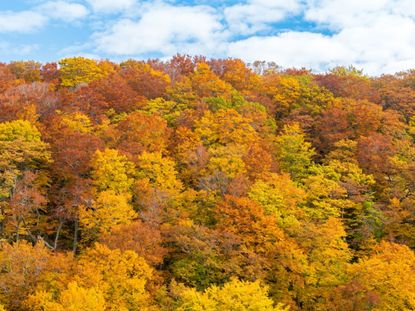
Caring for deciduous plants in the landscape isn't difficult. These interesting shrubs and trees add vibrant blooms in spring and summer, colorful foliage in fall, and then drop their leaves prior to a restful winter's nap. Keep reading to learn more about the life cycle of deciduous plants and what are deciduous trees and shrubs grown for.
What are Deciduous Trees and Shrubs?
Deciduous trees and shrubs are some of the most beautiful elements in the home landscape. They range in size, form, and color and shed their leaves each fall before they go to sleep for the winter. The term deciduous is a fitting name for these plants as the word means, “tending to fall off.” Deciduous shrub varieties and trees shed the part that they no longer need to survive for the season. Many types of deciduous trees add a great deal of interest to the landscape and serve a number of practical roles that include providing shade and reducing soil erosion.
Why Do Deciduous Plants Lose Their Leaves in Autumn?
The life cycle of deciduous plants includes a growing season and a dormant season. Warm spring temperatures and rainfall wake deciduous plants from their slumber and they begin to form new leaf buds. As temperatures continue to warm, the leaves develop more fully and reach maturity by the time summer arrives. Leaves produce food for the plant and help with respiration. As temperatures begin to cool, deciduous plants instinctively begin to shut down food production and leaves change colors due to the lack of chlorophyll and drop to the ground. It is due to this stage of the lifecycle that we get to enjoy the spectacular display of color each fall. Cold temperatures and a lack of moisture force deciduous plants into a deep slumber. This dormancy protects deciduous plants from extreme winter weather.
Caring for Deciduous Plants
Fall is the best time to plant deciduous plants as this gives them plenty of time to become acclimated before hot and dry weather arrives. Many deciduous plants including shrubs, fruit, and ornamental trees require pruning in order to thrive. It is imperative that you understand the pruning needs of your particular plants so that you can help them reach their full growing potential. Early spring fertilization also helps give deciduous plants a seasonal boost and often encourages prolific blooms on flowering varieties. Provide plenty of water during dry spells for new deciduous plants and check regularly for pest infestation or disease.
Types of Deciduous Trees
When selecting deciduous trees for your landscape, be sure that you choose varieties that are suitable for your growing region. Although many deciduous trees such as maples, birch, willow, oak, and hickory are big, there are a number of smaller or ornamental deciduous trees that make an excellent addition to the home landscape. Popular flowering trees include crepe myrtle, dogwood, and redbud. Fruit trees such as apple, pear, plum, and peach make a lovely and tasty addition to any garden and are often available in dwarf sizes, perfect for those with limited space.
Deciduous Shrub Varieties
Deciduous shrubs are often planted for their seasonal interest, color, and texture. Popular use of many deciduous shrub varieties includes windbreaks, privacy screens, or wildlife habitats. Popular deciduous shrub varieties include barberry, butterfly bush, and azalea.
Gardening tips, videos, info and more delivered right to your inbox!
Sign up for the Gardening Know How newsletter today and receive a free download of our most popular eBook "How to Grow Delicious Tomatoes."
-
 Does Gardening Reduce Carbon Footprint Size?
Does Gardening Reduce Carbon Footprint Size?If you’d like to learn how to reduce your carbon footprint on the Earth, start with your garden activities and planting decisions.
By Bonnie L. Grant
-
 How To Use Less Plastic: 5 Ways To Go Greener In Your Garden
How To Use Less Plastic: 5 Ways To Go Greener In Your GardenData on how our overuse of plastic is harming the planet may leave you wondering how to use less plastic. Here are ideas for reduced plastic use in the garden.
By Teo Spengler
-
 Best Trees For Carbon Sequestration And Climate Change
Best Trees For Carbon Sequestration And Climate ChangeLet’s keep planting trees. They are our best bet for capturing carbon and may help with our global warming issues.
By Teo Spengler
-
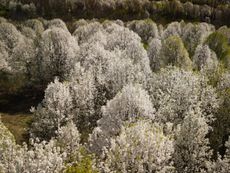 6 Invasive Trees You Should Never Plant In Your Yard
6 Invasive Trees You Should Never Plant In Your YardWhat are some invasive trees you should never plant in your yard? Click here to find out.
By Teo Spengler
-
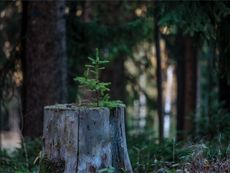 How Close Can You Plant A Tree To A Stump?
How Close Can You Plant A Tree To A Stump?Looking to plant new trees near old stumps or where stumps have been removed? Click here to learn how.
By Teo Spengler
-
 Messiest Trees That Drop Debris Everywhere
Messiest Trees That Drop Debris EverywhereWant to know which trees will create the biggest messes in your home landscape? Click here to find out.
By Amy Grant
-
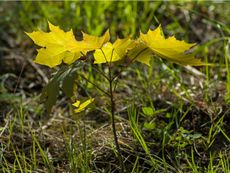 How To Get Rid Of Tree Sprouts In The Yard From Nearby Trees
How To Get Rid Of Tree Sprouts In The Yard From Nearby TreesLearn the simple way to keep pesky tree seedlings in your lawn from becoming saplings.
By Teo Spengler
-
 7 Common Tree Care Mistakes That Kill Trees
7 Common Tree Care Mistakes That Kill TreesAre you accidentally killing your tree? It's easier than you think, if you're committing one of these common mistakes. Click here for more.
By Teo Spengler
-
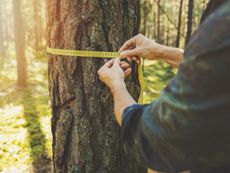 How To Tell How Old A Tree Is
How To Tell How Old A Tree IsEver wondered how to calculate the age of a tree? Click here to learn all about it.
By Teo Spengler
-
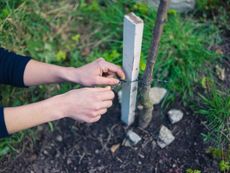 When To Remove Tree Stakes From Saplings
When To Remove Tree Stakes From SaplingsA newly planted tree may grow strong when it’s staked, but don’t forget to remove the stakes when it’s stable.
By Teo Spengler